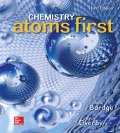
(a)
Interpretation:
The similar chemical behaviors of chlorine, bromine, iodine and differences in between fluorine and other halogens have to be given.
Concept introduction:
Halogens: A group of non-metallic elements which are showing similar chemical properties in the periodic table (group 17).
To show: The reaction of chlorine, bromine and iodine with hydrogen
(b)
Interpretation:
The similar chemical behaviors of chlorine, bromine, iodine and differences in between fluorine and other halogens have to be given.
Concept introduction:
Halogens: A group of non-metallic elements which are showing similar chemical properties in the periodic table (group 17).
To show: The formation of silver salts from chlorine, bromine and iodine
(c)
Interpretation:
The similar chemical behaviors of chlorine, bromine, iodine and differences in between fluorine and other halogens have to be given.
Concept introduction:
Halogens: A group of non-metallic elements which are showing similar chemical properties in the periodic table (group 17).
To show: The oxidizing character of chlorine, bromine and iodine
(d)
Interpretation:
The similar chemical behaviors of chlorine, bromine, iodine and differences in between fluorine and other halogens have to be given.
Concept introduction:
Halogens: A group of non-metallic elements which are showing similar chemical properties in the periodic table (group 17).
To show: The reaction of chlorine, bromine and iodine with sodium hydroxide
(e)
Interpretation:
The similar chemical behaviors of chlorine, bromine, iodine and differences in between fluorine and other halogens have to be given.
Concept introduction:
Halogens: A group of non-metallic elements which are showing similar chemical properties in the periodic table (group 17).
To give: The differences between fluorine and other halogens
Want to see the full answer?
Check out a sample textbook solution
Chapter 25 Solutions
Chemistry: Atoms First
- Write detailed answers to the following. a. What are different stages of the development of periodic table with main characteristics of each stage.b. What is the environmental role of the oxides of carbon, nitrogen and sulphur, also explain their preparation.arrow_forwardWhich of these two oxides, SO3 and P4O10 , when reacts with water will produce stronger acid?arrow_forwardCompare and contrast the chemistry of group 1 elements with that of group 2 on the basis of the Nature of oxides, Solubility and thermal stability, Polarizing power of cations and Reactivity and reducing powerarrow_forward
- Does the reaction of a main-group metal oxide in water pro-duce an acidic solution or a basic solution? Write a balanced equation for the reaction of a Group 2A(2) oxide with water.arrow_forwardDescribe the trend for second-period hydrides. Why is this trend observed?arrow_forwardHow do atomic properties account for the low densities ofthe Group 1A(1) elements?arrow_forward
- The Properties, Reactions and Applications of Oxygen Explain the classification of oxides as basic, acid, amphoteric and neutral. How can we predict whether an oxide will be acidic or basic based on its composition? Give an example of an amphoteric oxide and give two typical reactionsarrow_forwardHow do Groups 1A(1) and 2A(2) compare with respect to reaction of the metals with water?arrow_forward
 Chemistry: Principles and ReactionsChemistryISBN:9781305079373Author:William L. Masterton, Cecile N. HurleyPublisher:Cengage Learning
Chemistry: Principles and ReactionsChemistryISBN:9781305079373Author:William L. Masterton, Cecile N. HurleyPublisher:Cengage Learning Chemistry: Principles and PracticeChemistryISBN:9780534420123Author:Daniel L. Reger, Scott R. Goode, David W. Ball, Edward MercerPublisher:Cengage Learning
Chemistry: Principles and PracticeChemistryISBN:9780534420123Author:Daniel L. Reger, Scott R. Goode, David W. Ball, Edward MercerPublisher:Cengage Learning Chemistry by OpenStax (2015-05-04)ChemistryISBN:9781938168390Author:Klaus Theopold, Richard H Langley, Paul Flowers, William R. Robinson, Mark BlaserPublisher:OpenStax
Chemistry by OpenStax (2015-05-04)ChemistryISBN:9781938168390Author:Klaus Theopold, Richard H Langley, Paul Flowers, William R. Robinson, Mark BlaserPublisher:OpenStax


